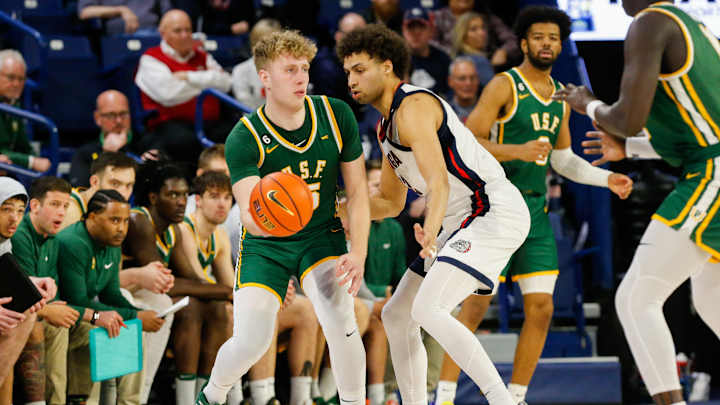Column: Why the NIT rules destroying mid-major college basketball are bad for the game

In this story:
The latest knee-jerk reaction in college athletics comes at the expense of mid-major basketball programs and conferences.
In a shocking announcement on October 27, the NIT Board of Managers made major rule changes to which teams can qualify for the NIT. Instead of granting automatic bids to conference regular season champions that lost their conference tournament and were not selected to the NCAA Tournament, the NIT will instead guarantee two teams based on the NET rankings from each of the Big 6 conferences (SEC, ACC, Big Ten, Big 12, Pac-12 and Big East).
Essentially, big schools that weren't good enough to qualify for the NCAA Tournament now have the first say over smaller programs that were the best teams in their respective conferences during the regular season.
For example, last season Eastern Washington won the Big Sky regular season with a 16-2 record in league play before losing to Northern Arizona in the conference tournament. The Eagles automatically qualified for the NIT, where they beat Washington State in the first round. If this season's NIT rules were in place, however, EWU wouldn't have earned a spot in the tournament and instead, everyone would've had to watch, for instance, a Colorado team that went 8-12 in Pac-12 play.
Does that make sense? A team that finished at the top of its conference standings won't have a chance to play postseason basketball because the NIT's leaders want the middling Big 6 programs that didn't win anything in the regular season or conference tournament. Oh, and those Big 6 teams would've likely earned an at-large bid anyway given how the NET Rankings work, which is another major flaw in these new rules.
Since the NET (NCAA Evaluation Tool) has been in place, the NCAA has referred to it as simply one of many data tools used to determine seeding in the NCAA Tournament. But rather than utilize other advanced metrics, the NIT has decided to rely upon one singular form of measurement to grant which teams get an invite and which ones don't. The NET Rankings reflect heavily upon the strength of schedule, which of course favors the Big 6 programs that play tougher opponents in conference play.
Graham Ike leads Gonzaga to exhibition win over Lewis-Clark State
That's a fair way to evaluate a team's pedigree to a certain degree, but it discredits the accomplishments of mid-major teams who have worked all season to be the best in the regular season. For schools like EWU, and schools in small conferences across the country, it's win the conference tournament or bust.
And those mid-majors come to the NIT ready to play. Last season, mid-major programs went 10-8 against Big 6 schools in the tournament, including 3-0 between the quarterfinals and semifinals. North Texas took home the title over UAB, joining 2021 Memphis, 2016 George Washington and 2011 Wichita State as recent non-Big 6 schools to win the tournament. A Cinderella story isn't a yearly occurrence, but like the NCAA Tournament, its a stage for a small school to make a name for itself.
The new NIT rules come after Fox Sports announced it is planning on holding a 16-team tournament in Las Vegas during the last week in March for teams from the Big 12, Big East and Big Ten conferences that don't make the NCAA Tournament. It's unclear if Fox will succeed in getting athletic directors and coaches on board, but regardless, it has forced the NIT to alter its qualifications to ensure the big-name schools not in the NCAA Tournament will keep its tournament relevant in terms of TV ratings.
Why does all this matter? While Gonzaga men's basketball isn't concerned over the NIT, the West Coast Conference is still predominately a mid-major conference. The last three NITs have featured at least one WCC school in the field, but that likely won't be the case moving forward. Even if Santa Clara or San Francisco were to shock the league in the regular season, it wouldn't ultimately matter unless it led to a conference tournament title.
For years the NIT, which has been the secondary postseason tournament for teams who just missed the cut to make the NCAA Tournament, has been welcoming to mid-major programs and a nuisance for the bigger schools. There have been plenty of instances where a non-Big 6 program has declined an invitation (shoutout North Carolina last season) due to the tournament's lack of prestige or simply because it is not profitable (the payout for each game in the 2023 NIT was $5,220). The NIT itself hasn't been profitable and it has lost recognition since moving away from Madison Square Garden - but now it is beyond recognizable.

Cole Forsman is a reporter for Gonzaga Bulldogs On SI. Cole holds a degree in Journalism and Sports Management from Gonzaga University.
Follow CGForsman